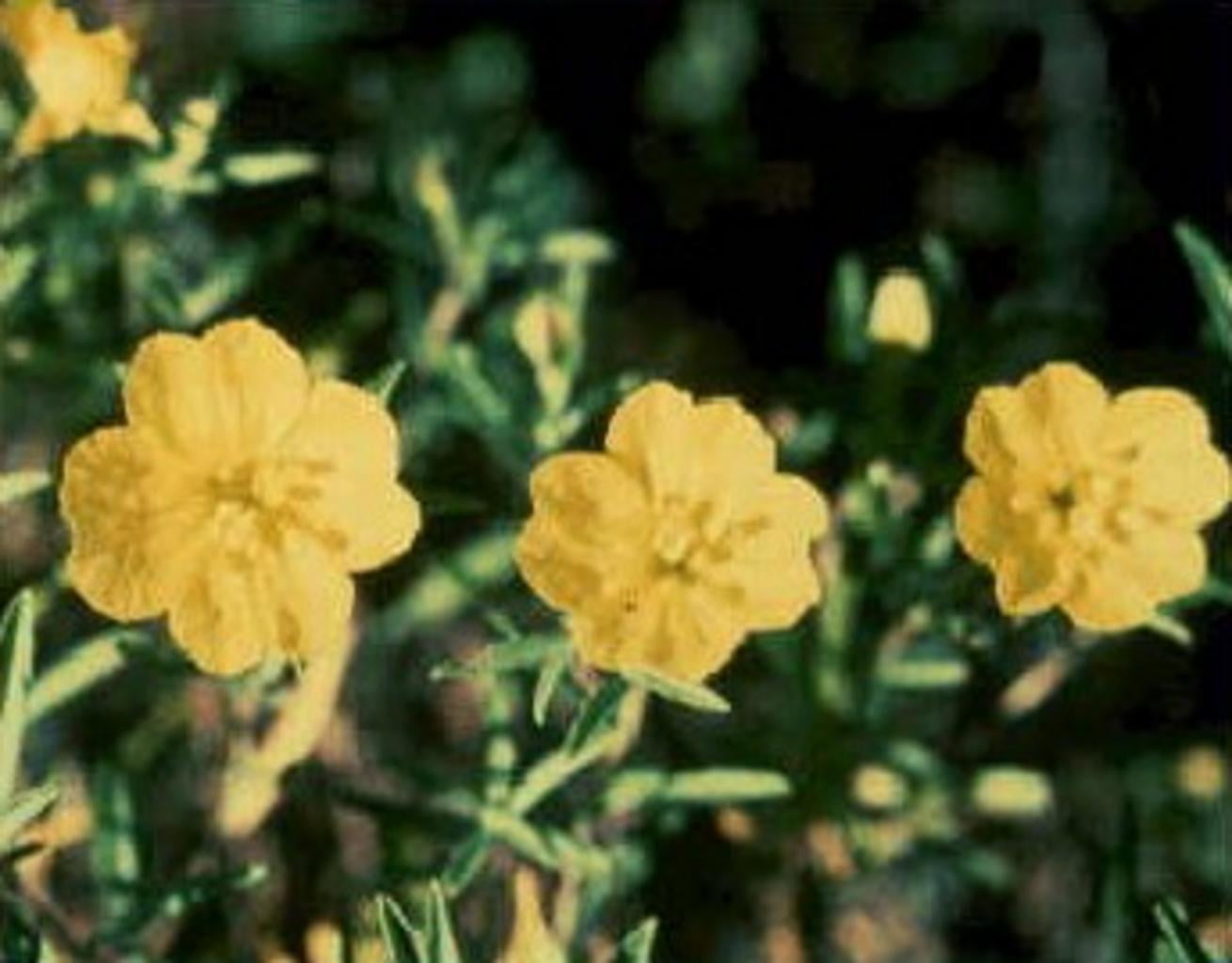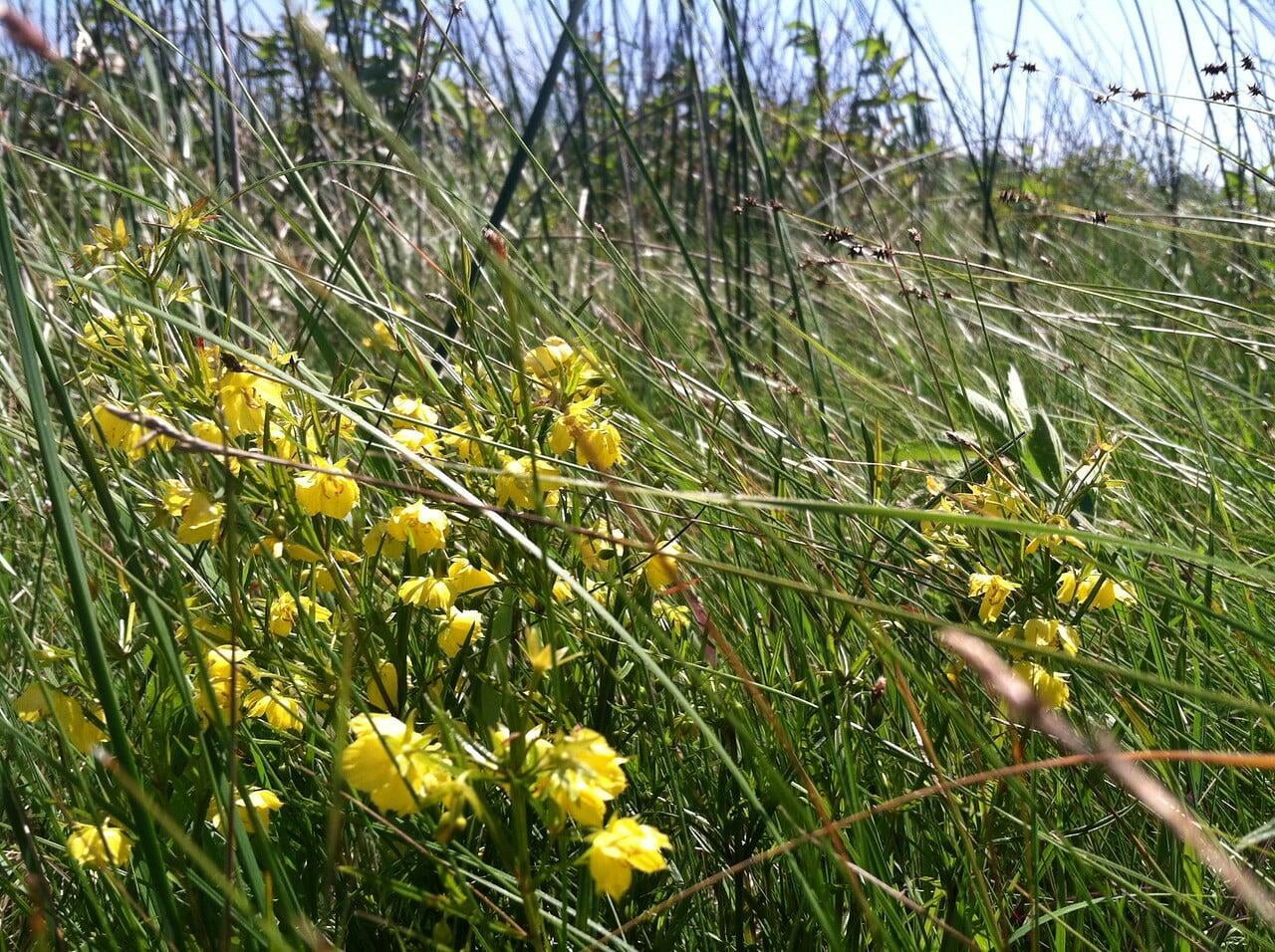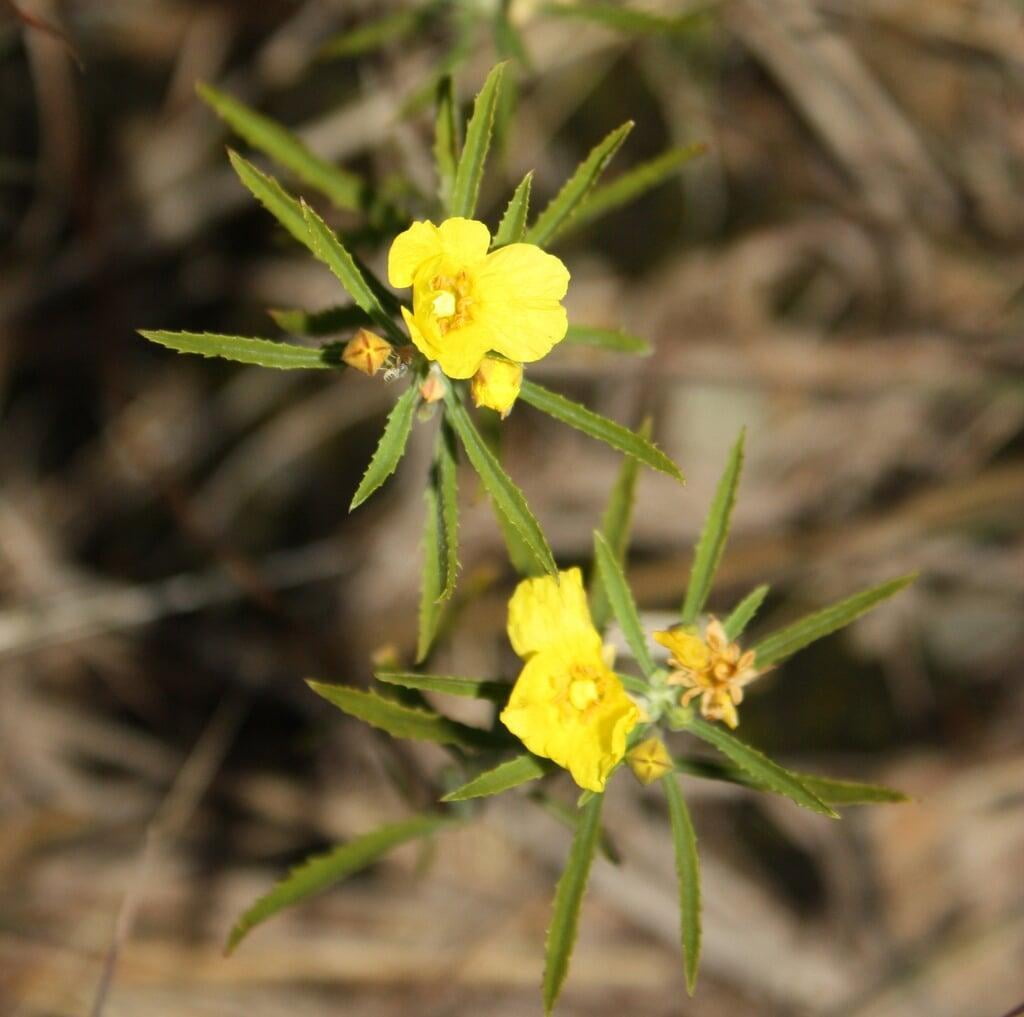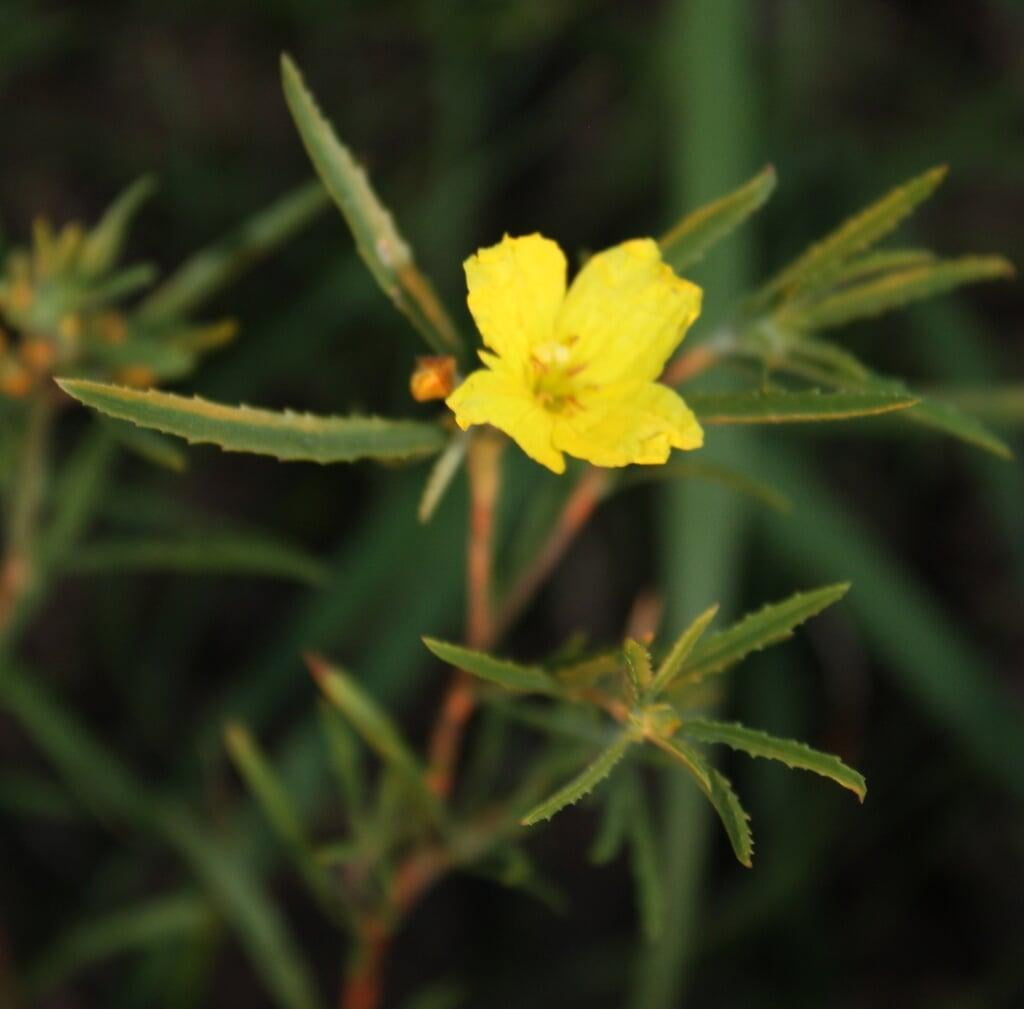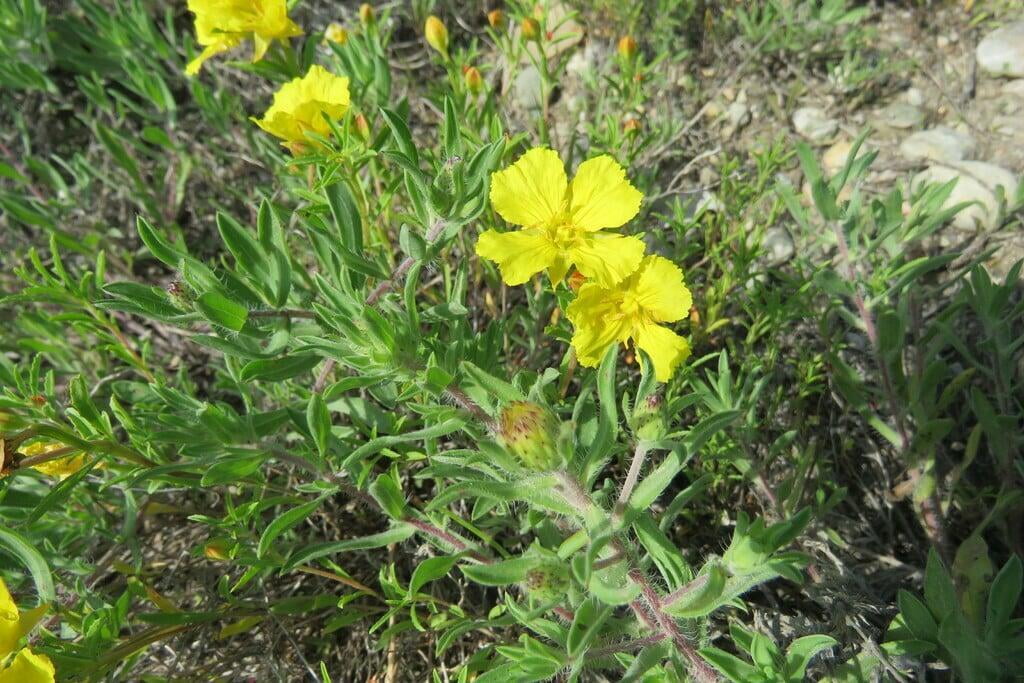Calylophus serrulatus
Yellow sundrops Description:
Calylophus serrulatus, commonly known as yellow sundrops or Texas primrose, is a perennial herbaceous subshrub that typically grows to a height of about 30-45 cm (12-18 inches) and has a spread of 60-90 cm (2-3 feet). It has narrow, lance-shaped leaves that are gray-green in color and slightly hairy. In the summer, the plant produces bright yellow, cup-shaped flowers that are about 3-5 cm (1-2 inches) in diameter. The flowers have five petals and bloom in profusion, covering the plant in a blanket of yellow. The flowers are followed by elongated seed capsules that split open to release the seeds.
Calylophus serrulatus is a drought-tolerant and heat-tolerant plant that is well-suited for xeriscape landscaping and is commonly used in rock gardens or other areas with well-draining, rocky soils. It is also useful for erosion control on steep slopes. The plant is a popular choice for ornamental purposes due to its showy flowers and attractive foliage.
In addition to its ornamental value, Calylophus serrulatus is also an important wildlife plant. The flowers are a source of nectar for bees and butterflies, and the plant serves as a host for the larvae of some butterfly species. The plant is also an attractive groundcover that helps to stabilize the soil and prevent erosion.
Overall, Calylophus serrulatus is a beautiful and useful plant that is well-suited for hot, dry climates and is a valuable addition to any garden or landscape.
Native Range:
Yellow sundrops can be found across the state of Minnesota, but primarily in western and southern portions of the state. More broadly, they can be found in the Central united states from Minnesota down to Texas.
Standard Plant Information:
Plant Height: 1' - 2'
Bloom Time: June - September
Preferred Habitat: Does well in sunny and dry prairies.
Sowing:
For most homeowners, the best option is to scatter seed on the ground by hand broadcasting at a minimum of 16-64 pls ounces per acre. For even coverage, we recommend that you broadcast seed in perpendicular rows across the site to ensure even coverage.
You’ll want to broadcast any grass seed first, which will get raked into the soil lightly. Next, it is ideal to mulch the area lightly with either a clean (no seed) straw or preferably with our native Little Bluestem straw, sold at our retail garden centers. After a light mulching is complete, now it’s time to broadcast your native wildflower seeds, which should not be raked into the soil. A good rain or watering is sufficient to cover the seed.
Planting:
Simply dig a hole in the soil slightly larger than the plant’s roots. Ensure that the soil line of the plant is maintained during the transfer (i.e. the plant should be at the same level with the ground as it was in the pot). Pack any loose dirt back around the plant and make sure you water it well the same day to ensure it has the best chance of survival.
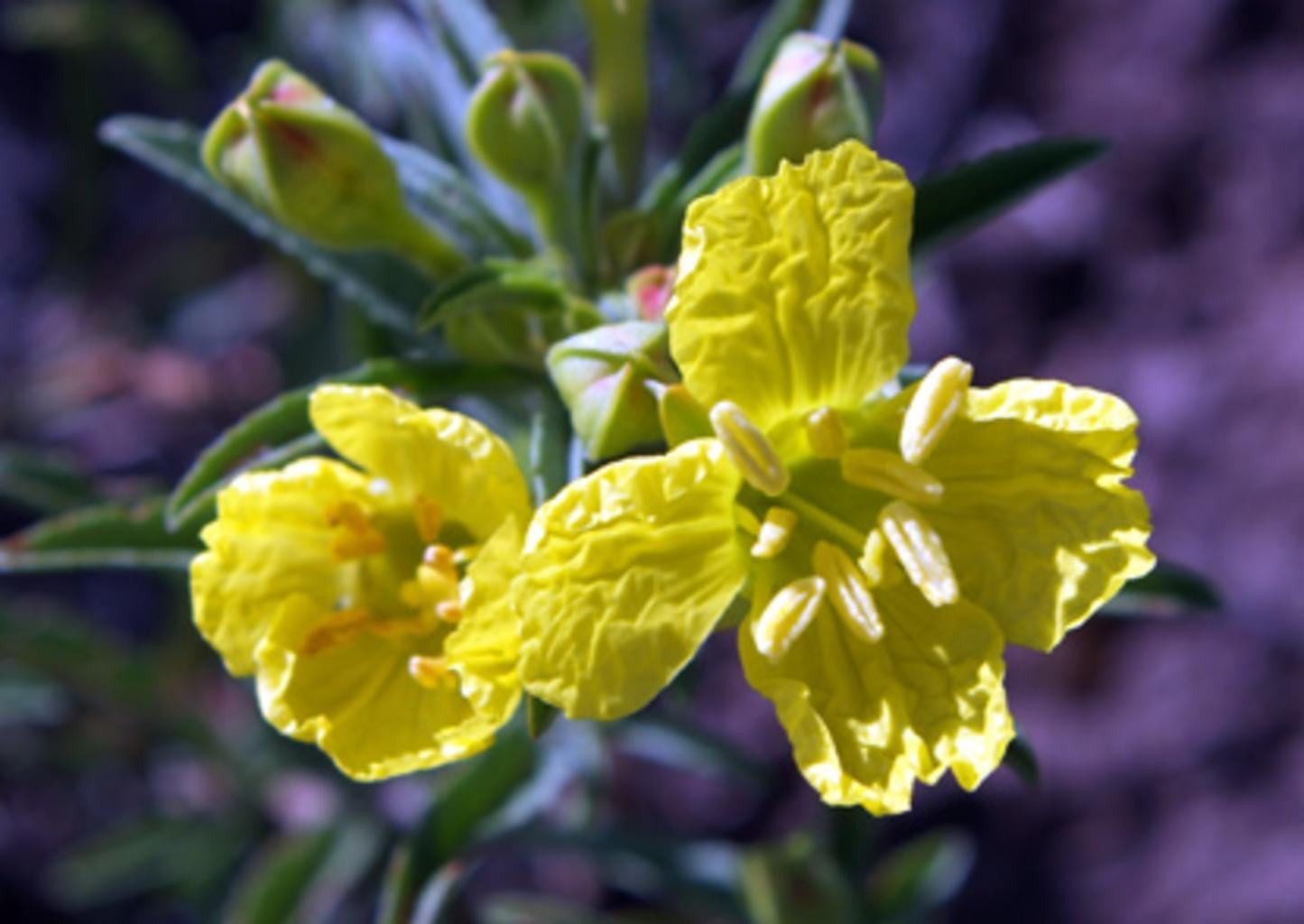
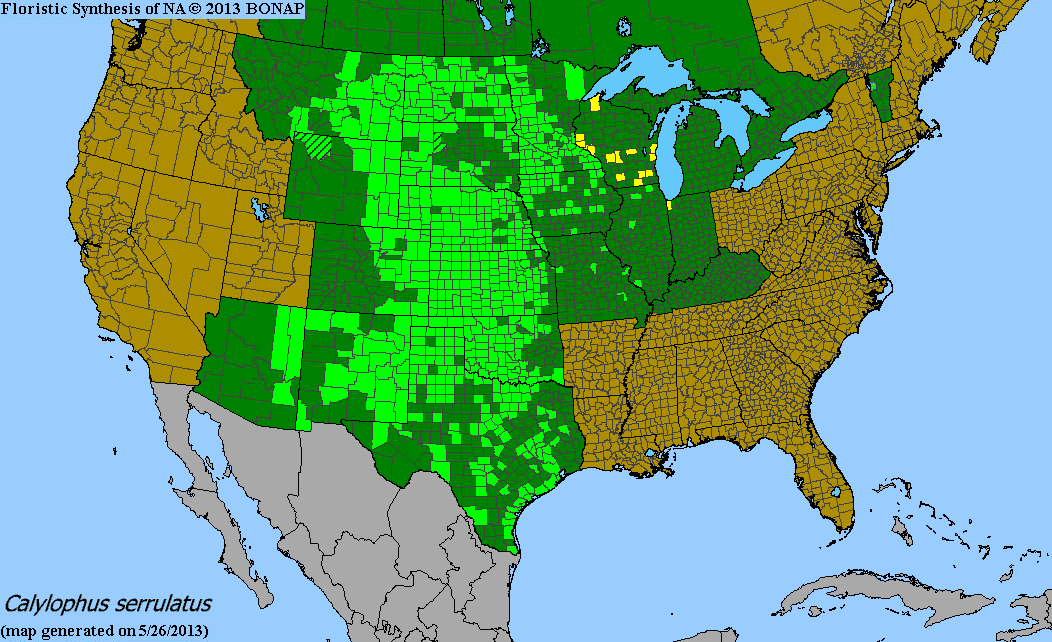
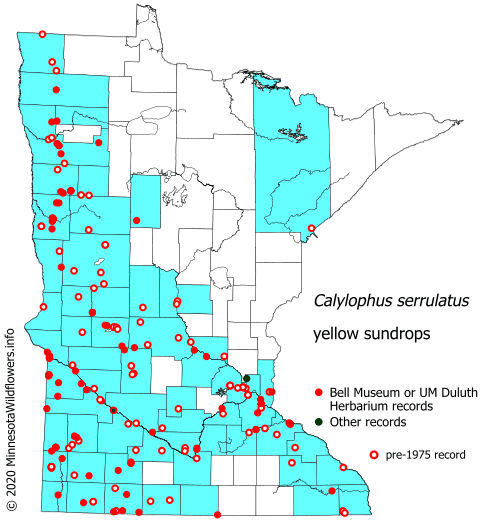
maps used with permission from MN Wildflowers
Calylophus serrulatus Gallery
Calylophus serrulatus Gallery
